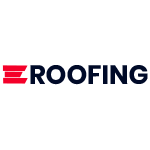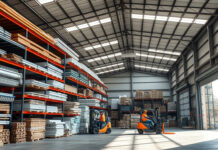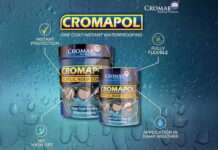Removing Moss Safely
If left untreated, moss can lead to structural issues in your roof such as leaks, blocked drains and broken tiles. By quickly and effectively removing moss from your roof, you can prevent the build-up of excess moisture that may seep into the roof’s structure.
Cleaning Moss from Roof Tiles
Here’s what you will need to remove moss from your roof:
- A ladder
- Garden hose (with a spray attachment)
- Safety glasses
- Long handled soft bristle brush
- Moss remover solution
- Safety rope/harness
- Scrubbing brush
- Backpack sprayer
Prior to removing moss from your roof, you will need to ensure that you are dressed appropriately, wearing the correct safety gear, your ladder is stable and in good condition and that if using one, your safety rope/harness is secured.
Cover any nearby plants and flower beds with plastic sheeting.
- Using the garden hose with a spray attachment, spray the moss covered sections of the roof with water, working from the top of the roof downwards.
- Take your long-handled soft bristle brush, work in small sections, and gently scrub the moss on the roof tiles, roof vents and shingles, again working from the top of the roof downwards. By working in small individual sections you will have much better control of the brush, aiding in a more effective moss removal and reducing the risk of damage to the tiles and shingles.
- Once you have cleaned and removed as much as you can with the soft bristle brush, it is time to spray the roof with your chosen moss remover solution. Using a backpack sprayer, spray all the affected areas using a moss removing solution, allowing it to sit for the time recommended by the manufacturer.
- Take the garden hose again, and begin to rinse off the moss remover solution, simultaneously taking the scrub brush and removing any remaining moss. You may need to rinse the roof over again, to remove any remaining loose moss.
Preventing Moss Build-Up
In order to stop moss regrowth, it is important to consider the factors you can easily control.
Keeping your roof exposed to sunlight as much as possible can help to prevent moss regrowth. You can increase the sun exposure to your roof by regularly trimming any trees or branches that may overhang and shade your roof. This will allow more light and warmth onto the roof’s surface, which are not favourable conditions for moss growth.
Ensuring to keep your gutters clean, removing any built up dirt or debris can help improve the water flow from your roof, preventing excess moisture build-up that can contribute to moss growth.
To further prevent moss growth, it may be worth fixing a zinc, copper or galvanised metal strip along the top of the ridge tiles. When it rains, the strip oxidises, leaching out moss-resistant ions that run down the roof tiles and inhibit moss from forming.
Should You Remove Moss?
Removing moss from your roof’s surface is necessary to ensure the proper functioning of the water drainage system and to prolong the lifespan of your roof.
Moss can hold up to five times its dry weight in water, meaning that large patches of moss can be rather heavy and hold a significant amount of water against your roof’s surface. This excess moisture can cause your roofing materials to rot, increasing the likelihood of leaks and water damage.
In the colder month, the water held in patches of moss can end up freezing, causing the roof tiles underneath to become brittle. This means they are more likely to break and crack, reducing the structural integrity of the roof.
It is recommended that you contact a professional before attempting to remove the moss yourself as it can be dangerous and can easily cause damage to your roof. It is essential that you have the right equipment for the job, and that the moss is removed thoroughly to prevent regrowth.
Why You Should Never Use A Pressure Washer
Using a pressure washer will remove moss from your roof, however it is the fastest way to damage your shingles and tiles. The force of the pressure washer can break the shingles, and strip the surface granules from your roof tiles. On top of this if there are any other weak spots on your roof, the power of the pressure washer can cause water damage and worsen any leaks in the loft.





